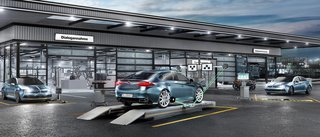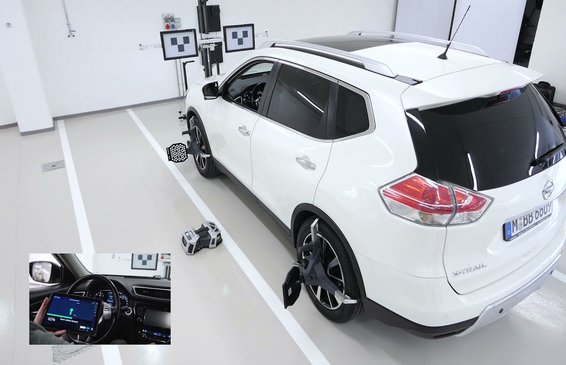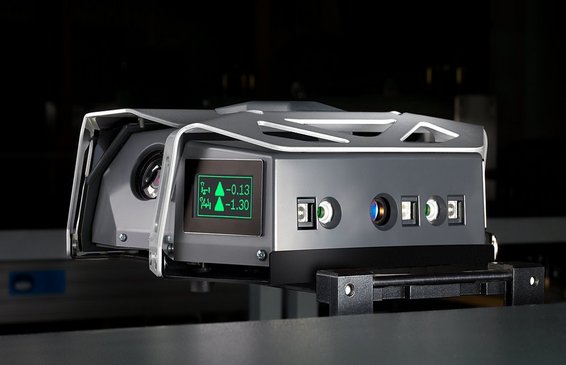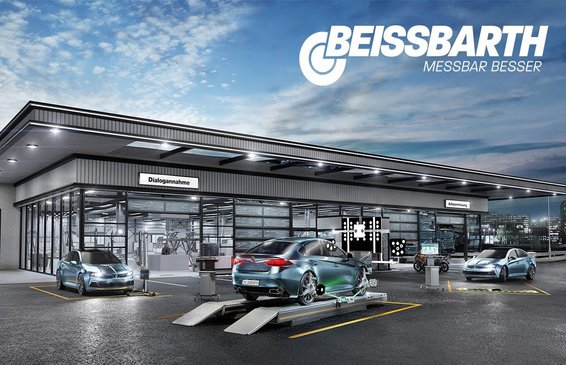FAQ
What is Q.DAS?
Q.DAS is a modular system for ADAS calibration that works in combination with a wheel aligner.
What do you mean by "modular" system?
The modular systems allows workshops to customize their calibration solution to their budget, OEM brands covered, and calibration volume. Why pay for equipment that is not suited for your workshop? Q.DAS helps you to only select the options you need and want to offer for your customers.
Who is Q.DAS for?
Q.DAS aims at the ADAS calibration of forward-facing camera, radar, and LIDAR systems that need to be calibrated immediately after a wheel alignment. Looking to offer alignments to ADAS-equipped vehicles? Better make sure you are able to recalibrate ADAS.
Q.DAS allows you to make your alignments even more profitable by keeping the ADAS calibration inhouse, without the need for additional space or remodeling of your workshop.
What systems does Q.DAS calibrate?
Q.DAS calibrates forward-facing camera, radar, and LIDAR systems that are safety-critical. This ensures systems like emergency braking, which are becoming mandatory in new vehicles in EU, US, and Australia in 2022, to function properly and according to OEM specs.
Where is Q.DAS used?
Q.DAS is an on-the-lift solution. It focuses on ADAS-equipped vehicles that require recalibration immediately after a change in wheel alignment parameters. You can therefore perform an ADAS calibration without moving equipment or the vehicle around, saving time and space.
How is Q.DAS different from conventional ADAS solutions?
Conventional systems are designed for off-the-lift applications and usually cover all ADAS systems, including comfort features like parking sensors. In order to cover all ADAS systems across all brands, workshops need a lot of space, a levelled floor, and lots of storage options. Most workshops don't have this space available or the necessary floor requirements and therefore perform only selected ADAS calibrations on a lift.
Also, ADAS solutions that don't work in combination with a wheel aligner simply assume the alignment is according to OEM specs. Q.DAS ensures this is the case and in combination with Q.Lign you can align your vehicle to OEM specs in no time and calibrate ADAS in one go.
What is the difference between safety-critical and comfort ADAS?
Safety-critical ADAS applications include automatic emergency braking, lane departure warning, pedestrian detection, traffic sign recognition that prevent deaths and injuries. These systems are predominantly forward-facing and prevent the most serious types of accidents. Comfort features enhance the driving experience or make driving easier, e.g. parking sensors.
Important to know from a service perspective: safety-critical ADAS applications usually require calibration following a wheel alignment whereas comfort features don't.
Why do I need a wheel aligner?
The wheel aligner removes the need for measuring tapes or blump bobs because it uses cameras to exactly position the ADAS tool in front of the vehicle. Not only is this quicker but also a whole lot more accurate. A wheel aligner also compensates for clamping errors and runout which is completely neglected in analog ADAS solutions. This removes a lot of room for errors and provides third parties also with the necessary documentation.
What wheel aligners can I use in combination with Q.DAS?
Q.DAS works in combination with all Beissbarth wheel aligners. However, using Q.Lign in combination with Q.DAS provides the most synergies and advantages for workshops.
What advantages do I have when using Q.DAS in combination with Q.Lign compared to other wheel aligners?
EasyCCD+ aligners allow you to position Q.DAS in yaw angle and offset, but requires you to manually measure distance and height. The Easy3D+ provides you distance and height measurements using its cameras. When using Q.Lign, all live measurements are immediately compared versus OEM specs to position the target correctly. This makes the positioning process easier and quicker than ever!
How do I select the right calibration targets for my workshop?
We offer targets for nearly all OEMs. Depending on which brands you service in your workshops, you can select the right ones for you. OEMs also share certain vehicle platforms among each other which is why one target solution may be used for models from two different brands. In other instances, you may need an additional target for a newer generation of the same vehicle model. Our website provides you a detailed vehicle coverage list for each target solution. Alternatively, Q.mApp also shows you exactly what target you need for calibrating a certain vehicle.
When should I choose eTargets over conventional targets?
When you need to cover multiple OEM brands you need a lot of different targets. This not only creates costs but also requires lots of storage room. eTargets contain 15 different ADAS target patterns which are automatically selected by using Q.mApp. This ensures you are selecting the right target without any setup times.
When you are highly specialized and cover only few brands, it may be more economical for you to purchase conventional targets.
However, eTargets are documentable, meaning you can ensure third parties that the right target pattern was used.
How does the eTarget technology differ from monitors and projectors?
eTargets with reflective technology guarantee ultra clear cutoff lines between black and white and provide higher contrasts. In strong light environments, the eTarget technology is less sensitive to sunlight and the glass-free surface reduces reflections to a minimum. Monitors and projectors on the other hand are optimized for the human eye and provide lower contrasts between black and white. However, precise cutoff lines are crucial for calibrating camera systems safely and according to OEM specs.
How can I calibrate radar systems with Q.DAS?
Q.DAS allows you to calibrate radar systems by using the new 2-in-1 XXL calibration board. You can lower it to the height of the radar sensor, tilt it, and even move it sideways to also cover double radar systems. All without rotating, moving or changing your ADAS setup. The pattern on the target additionally enables the calibration of all front camera systems of the Volkswagen Group.
What is Q.mApp for?
Q.mApp is our Android-based software that guides the user through the ADAS setup and positioning. After selecting the make, model, and year, Q.mApp provides you the following information:
- what targets and equipment to use
- Distance, height, yaw angle, and offset to correctly position the target or radar mirror
- Real-time posititiong to OEM specs (only with Q.Lign)
- Step-by-step instructions through complete ADAS routine
- Following documentation after calibration (in works)
Alternatively, you can also use our standard mirror.
Do I need a license for Q.mApp?
The basic version of Q.mApp is freely available for you to download. This allows users to quickly identify which equipment (frame, target, mirrors, lasers, etc.) is necessary to calibrate a specific sensor in the selected vehicle.
Fully access requires a license for activation. This unlocks the full content of Q.mApp with information like:
- Distance, height, yaw angle, and offset to correctly position the target or radar mirror
- Real-time posititiong to OEM specs (only with Q.Lign)
- Step-by-step instructions through complete ADAS routine
- Following documentation after calibration (in works)
What diagnostic tools are compatible with Q.DAS?
Q.DAS works agnostic of a specific diagnostic tool. Most workshops already own two or more IAM diagnostic testers in order to cover all makes and models. Often even in combination with an OEM tester. Q.DAS takes care of the complete positioning process, what diagnostic tester is used in order to communicate with the vehicle is up to the workshop. We encourage the use of already existing testers and don't lock you in to only one diagnostic solution.
Why is documentation so important for ADAS calibration?
ADAS is all about safety. Proper documentation ensures customers as well as third parties that everything has been performed to OEM specs and protects you from potential liability issues. Q.DAS complies with OEM specs and provides you with the necessary documentation for it.
Why should alignment and calibration results be documented together?
Safety critical ADAS applications usually requires recalibration following a wheel alignment. The combination with a wheel aligner allows you to perform the ADAS calibration in one system, without having to remove the vehicle or change the steering position.
As many vehicles are equipped with rear wheel steering or dynamic steering in the front, the steering level position is crucial in the correct positioning of the ADAS fixture. Ensuring front wheels are in straight ahead position is something only the combination of Q.DAS and Q.Lign can provide.
What's the difference between the Standard and the Pro versions of Q.DAS?
The standard version comes with a smaller sliding base and covers all passenger cars. It's intended for a more mobile and occasional use.
The Pro version provides you with a larger sliding base and covers passenger cars as well as light commercial vehicles. Its more intended for high volume throughput in one place.
What advantages does the X-Y-sliding base offer?
The sliding base allows you to adjust in distance and offset without having to relevel the whole fixture. This allows you to quickly make fine adjustments without having to worry about levelness.









